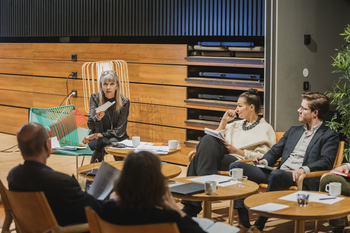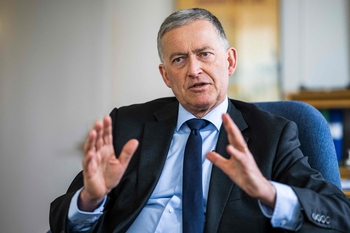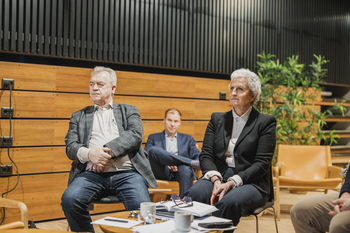Obstacles to freedom of movement in the Nordic Region
In connection with the 65th Session of the Nordic Council in October 2013, the Nordic prime ministers signed a joint declaration to combat obstacles to freedom of movement in the Nordic Region.
Obstacles to freedom of movement include laws, public regulations, or practices that hinder the mobility of individuals or the ability of companies to operate across borders in the Nordic Region. Although the varying levels of remuneration and taxes in the Nordic countries aren’t considered an obstacle to freedom of movement, if a person exercising their right to freedom of movement receives worse conditions than other individuals in a comparable situation, both in the country of residence and in the other country, then this is regarded as an obstacle.
Freedom of Movement Council
A new organisation, the Freedom of Movement Council, was established on 1 January 2014. The Freedom of Movement Council is an independent body tasked by the Nordic governments with promoting freedom of movement in the Nordic Region for the benefit of both individuals and businesses. The aim with the Freedom of Movement Council is to encourage national political and administrative systems to remove obstacles to freedom of movement between the Nordic countries. Through the work of the council and other stakeholders, the aim is to establish the conditions for an integrated region where residents can easily work, move, study, and start businesses across borders. The work on removing obstacles to freedom of movement takes place in close co-operation with stakeholders such as the Nordic Council, information services, border committees, labour market partners, ministries, public authorities, civil society, and business organisations.
Recent crises have affected freedom of movement and posed challenges for people living and working in border regions in particular. In connection with the Ministers for Nordic Co-operation granting the Freedom of Movement Council a new mandate for the period between 2022 and 2024, the council was also tasked, at short notice, with gathering information on and raising the governments’ awareness of the freedom-of-movement issues that arise in times of crisis, as well as with proposing solutions and making its knowledge available when requested.
In addition, the Freedom of Movement Council works on issues and challenges that don’t fall directly under the above-mentioned definition of obstacles to freedom of movement, but which are considered to hinder intra-Nordic mobility and integration.
A common labour market
A common labour market has been a feature of the Nordic Region since the 1950s. By sharing labour, the Nordic countries have been able to even out imbalances between countries with higher levels of unemployment and those with labour shortages.
The common labour market has enabled the Nordic countries to overcome economic fluctuations and facilitated more positive development than would otherwise have been the case. The sharing of labour remains important, especially in the border areas of the Nordic Region.
Nordic business
Nordic businesses have become increasingly integrated.
Neighbouring countries make up a disproportionally large share of each Nordic country’s import and export markets. Studies have shown that the single biggest obstacle to doing business across Nordic borders is the lack of accessible, relevant information about regulations and the like in the other countries. Several tax-related issues and dual administration have also been identified as problematic.
It’s in the interests of all the Nordic countries that businesses are able to operate across borders with as few restrictions as possible. Projects are therefore being launched on a regular basis that seek to identify and remove obstacles to freedom of movement in the field of business.
The Nordic Region in the world
All of the Nordic countries have strong links to the European Union, either as members or because they’re part of the EEA.
The Nordic Region is therefore part of the EU’s internal market in most sectors. Through their links to the EU, the Nordic countries are also obliged to follow the various regulations and directives that are drawn up at the European level.
Several of these directives address people’s right to freedom of movement within the EU/EEA and the common European market. For this reason, the Nordic goal of an open region harmonises well with the European ideal.
Nordic Council of Ministers’ action plan for Vision 2030 – The Nordic Region in the world
The action plan describes how the Nordic Council of Ministers will work to achieve the objectives of the vision through a series of initiatives linked to the vision’s three strategic priorities: a green Nordic Region, a competitive Nordic Region, and a socially sustainable Nordic Region. There are 12 objectives linked to the strategic priorities. The strategic priorities and objectives govern all the activities of the Nordic Council of Ministers over the next four years. The action plan is divided into 12 sections, each one linked to one of the 12 objectives.




